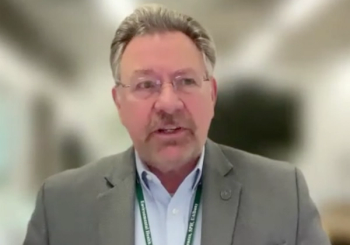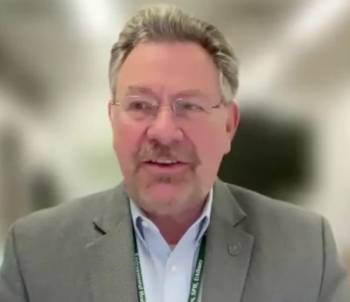
- Spectroscopy-10-01-2020
- Volume 35
- Issue 10
Reliable Chemical Analysis of Aerosols by Reference-Free X-ray Spectrometry for Monitoring Airborne Particulate Matter
This approach provides traceable and reliable quantitative elemental analysis of airborne particles for on-site environmental measurement with portable instrumentation.
The physical and chemical analysis of aerosols using reliable and physically traceable methods is important for the thorough investigation of airborne particles to support a better understanding of their origin as well as their health and climate impacts. Within the European Metrology Research AeroMet project, the aim of Physikalisch–Technische Bundesanstalt’s (PTB) X-ray spectrometry group is to develop and establish traceable and reliable X-ray methods to measure the elemental mass deposition per unit area, the elemental composition, and the chemical binding state of particulate matter supported by a flat substrate. This approach can substantially contribute to support quantitative analytical methods during on-site measurement campaigns where portable instrumentation is employed by qualifying suitable calibration samples for commercial analytical X-ray instruments and by investigating samples collected during the field campaign.
The legal definition and enforcement of air quality regulations require an accurate and reliable monitoring of airborne particulate matter (PM). The monitoring needs to be evaluated at different levels to correctly assign the origin or source of airborne PM and pinpoint the possible adverse effect on health while assessing the impact of anthropogenic sources on atmospheric processes. Analytical techniques are therefore required to deliver quantitative information on the size of the PM, along with the chemical composition in terms of each element’s mass. For example, this applies to the PM collected during outdoor field campaigns aimed at making adequate and correct correlations with human activities and environmental processes. The analytical techniques need to be able to cope with collection times of airborne PM of only a few hours to deduce or assign changes in PM load resulting from industrial activities and changing weather conditions. This means that sufficient sensitivity is required in order to enable sufficient time resolutions and to provide accurate data on the mass of each element collected, even for fine and ultrafine particles, which are in the size range below 1 μm. Only with this information can appropriate preventive measures to protect health and climate be realized and controlled.
Different analytical techniques with suitable sensitivity are available for the detection of trace level amounts of airborne PM collected during outdoor campaigns (1). Among them, the combination of cascade impactors using quartz or silicon substrates and total reflection X-ray fluorescence (TXRF) has emerged as a promising contributor to the field. TXRF is routinely used for the detection of trace-level contaminants on semiconductor samples (2). The technique presents several advantages: First, sample preparation and handling requirements are minimal because the substrates used for the collection of airborne PM can be directly used for analytical purposes. Second, the nonconsumptive character of the analysis leaves intact samples for cross-comparative analytical studies by means of different techniques as long as validation studies are feasible. This aspect is important within the European Metrology Research AeroMet project where the aim of PTB’s X-ray spectrometry group is to develop and establish traceable and reliable X-ray methods to measure the elemental mass deposition per unit area, the elemental composition, and the chemical binding state of PM collected on the top of a flat substrate. This approach can substantially contribute to support quantitative analytical methods during onsite measurement campaigns where portable instrumentation is employed by qualifying suitable calibration samples for commercial analytical X-ray instruments and by investigating a posteriori samples collected during field campaigns.
References
In one study, airborne PM was sampled during field campaigns in a time and size-dependent partitioning using two different cascade impactors and substrates suitable for TXRF analysis. Some of the results using TXRF instrumentation are reported elsewhere (3). The cascade impactors used were a commercial Dekati (DLPI10) and a May-type instrument. A selection of the samples collected has been reinvestigated using reference-free X-ray spectrometry (XRS). In reference-free XRS, radiometrically calibrated instrumentation and knowledge of fundamental parameters involved in the production of the detected XRF are used in a forward calculation to extract the mass deposition (number of atoms or mass of a specific element per unit area) from the experimental data (4).
The reference-free XRS investigation on the samples from the Dekati impactor were realized at 10 keV incident photon energy and at a shallow incidence angle of 10°. This shallow incidence angle means that standard excitation conditions are used without the creation of an X-ray standing wave (XSW) technique and that the quantification scheme can be realized on the basis of Sherman’s equation (5). The size of the synchrotron radiation beam used required a mapping of the collected PM to probe the whole sample surface and to provide the correct mass for each element collected (Figure 1). Due to possible beam overlap in neighboring measurement positions, a deconvolution of each elemental mass deposition map, considering the spatial incident beam profile, is required before a two-dimensional integration provides the total elemental mass collected on the substrate analyzed. The investigation described makes it possible to verify that the deposition patterns, in terms of spatial distribution of the collected PM, match the expectation, which is the pattern of the nozzles used in the corresponding impactor stage in order to exclude possible contamination contributions to the measurement. More importantly, this procedure allows for an independent validation of the quantitative results reported during field campaigns. This aspect is important for a systematic monitoring of the air quality.
In another study, the impact of the collected PM mass on the TXRF results was investigated. In TXRF, the detected intensity depends on the composition of the matrix on the top of the substrate. The mass of each element within the area illuminated by the incident X-ray beam is often considered to be in a linear relationship from the detected count rate. This approach is, however, compromised when an XSW is involved in the experiment and the total mass of the deposited PM is unknown. The modulation of the XSW influences the excitation probability for XRF radiation, and an accurate quantification can only be deduced when the XSW is correctly modeled.
To assess the impact of the different masses of PM, grazing incidence XRF (GIXRF) measurements were performed at an incident photon energy of 1622 eV on silicon wafers used for the collection of PM in the May-type cascade impactor. Here, the deposition pattern corresponded to a line, which was aligned prior to the GIXRF measurements along the incidence direction of the synchrotron radiation. The PM was found to be distributed uniformly along the line. In GIXRF, the dependence of the XRF signal on the incidence angle is monitored above and below the critical angle of total external reflection.
As a result, a GIXRF measurement includes more data than TXRF. This additional information can be used to assess the reliability of the quantification performed. The goal of making GIXRF measurements on samples with different amounts of PM was to compare the quantification under TXRF conditions (where the XSW needs to be considered) to XRF under shallow incidence conditions (where no XSW is created). It was found that the XSW field is drastically changed for high particulate load, which makes correct quantification tedious and requires correction factors for the attenuation within the collected deposit (Figure 2). Finally, an accurate quantification relies heavily on the sample loading on the top of the substrates, hence on the collection time of airborne PM, the PM size distribution, the cascade impactor related spatial deposition pattern, and the pollution level. For the reliability of TXRF quantification it will be crucial to establish thresholds on the mass of the collected PM. If no dependence on the grazing incidence angle of the XRF signal is measured, additional information like the reflectivity of the sample investigated or the XRF intensity of the substrate material should be considered and compared to blank substrates to deduce if matrix effects are crucial for the experiment realized. In case of large amounts of PM, accurate quantification can only be performed if absorption effects within the PM are considered, which requires, however, complete knowledge of elemental composition of the matrix.
Finally, reference-free XRS is a suitable means for an independent validation of results obtained by means of laboratory-based TXRF instrumentation, which can be used for a high-throughput investigation of airborne PM collected on substrates. It was shown that additional information can be delivered that allows tracing back possible correlations within the elemental maps collected with the Dekati impactor, respectively assessing limits for PM mass which can reliably quantified by means of TXRF. Means of control can be straightforwardly implemented by means of X-ray reflectivity of angular variations to assess the validity of absolute quantification.
Conclusions
One may conclude that XRF analysis under grazing incidence conditions, also available as commercial TXRF and GIXRF laboratory instruments, provides access to quantitative elemental analysis of size-fractionated air-borne particles allowing to substantially contribute to regulated toxicity assessments and validation of orthogonal analytical techniques such as inductively coupled plasma mass spectrometry.
Acknowledgments
The project is supported by the EMPIR program cofinanced by the participating states and from the European Union’s Horizon 2020 research and innovation program through grant agreement 16ENV07 AeroMet. A weblink of the European Research project can be found here:
References
- E. Bulska and A. Ruszczyńska, Phys. Sci. Rev., 2(5), 20178002 (2017). doi:
https://doi.org/10.1515/psr-2017-8002 . - B. Beckhoff, R. Fliegauf, M. Kolbe, M. Müller, J. Weser, and Gerhard Ulm, Anal. Chem., 79, 7873–7882 (2007).
- J. Osán, E. Börcsök, O. Czömpöly, C. Dian, V. Groma, L. Stabile, and S. Török, Spectrochim. Acta B. 167, 105852 (2020).
- B. Beckhoff, J. Anal. At. Spectrom. 23, 845–853 (2008).
- J. Sherman, Spectrochim. Acta B. 7, 283–306 (1955–1956).
Yves Kayser, Philipp Hönicke, and Burkhard Beckoff are with Physikalisch-Technische Bundesanstalt (PTB) in Berlin, Germany. Armin Gross is with Bruker Nano GmbH in Berlin, Germany. Janos Osan is in the Environmental Physics Department at the Centre for Energy Research in Budapest, Hungary. Stefan Seeger is with the Federal Institute for Materials Research and Testing (BAM) in Berlin, Germnay, and Beatrix Pollakowski-Herrmann is with PTB and the Federal Institute for Materials Research and Testing. Direct correspondence to:
Articles in this issue
Newsletter
Get essential updates on the latest spectroscopy technologies, regulatory standards, and best practices—subscribe today to Spectroscopy.




